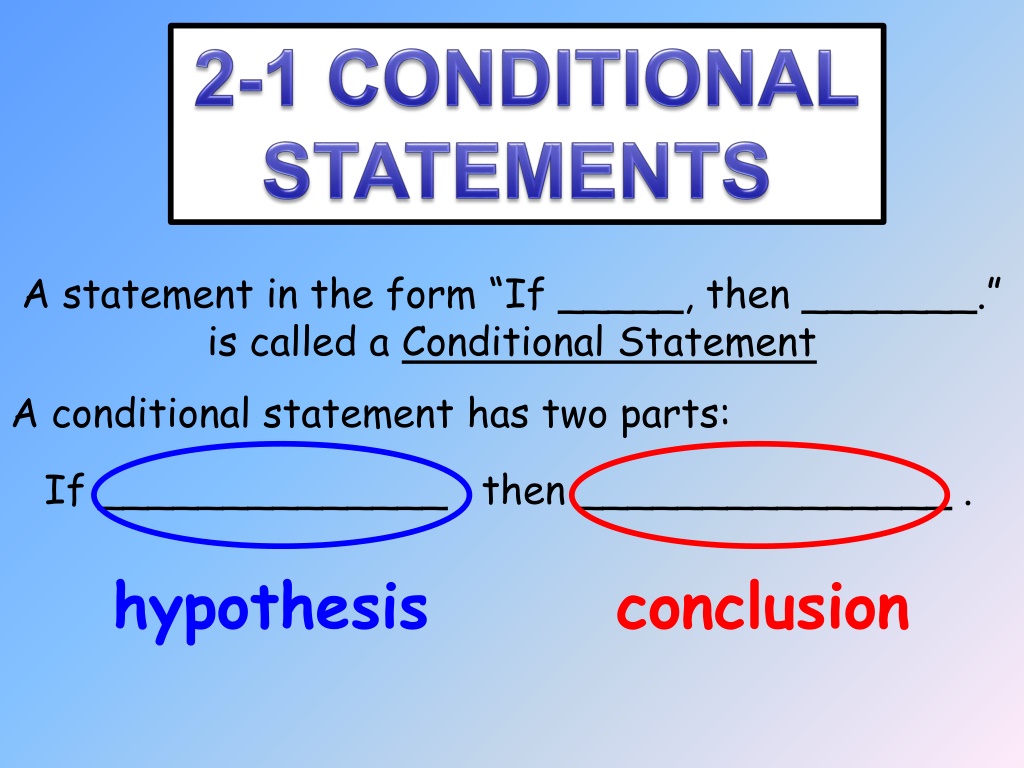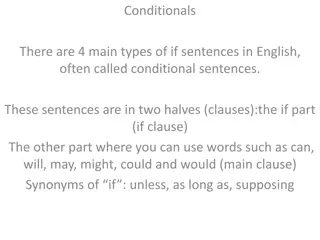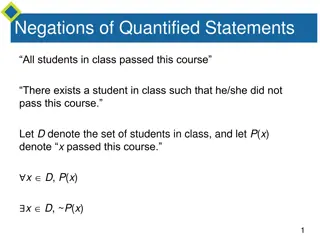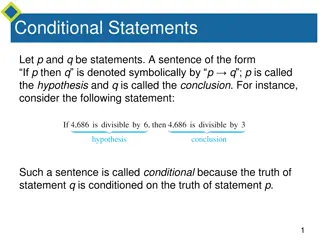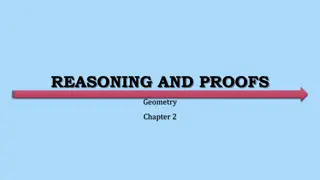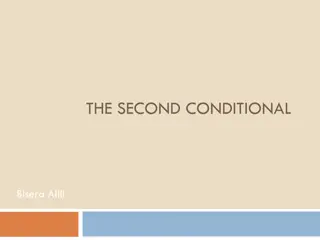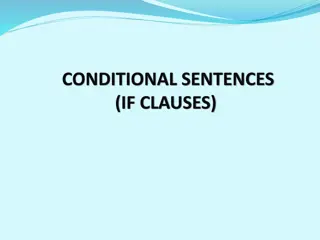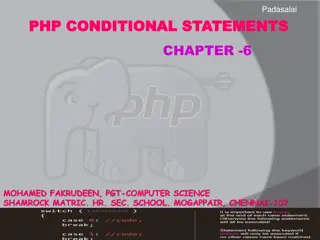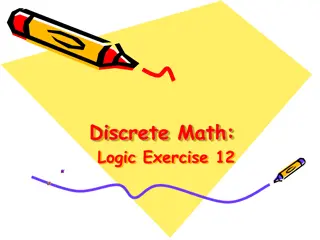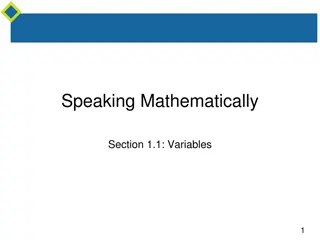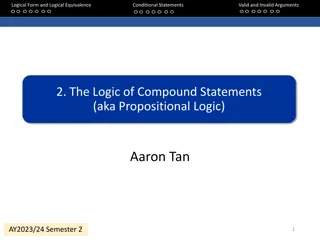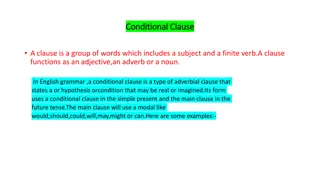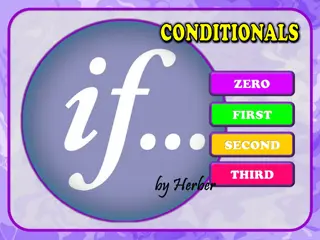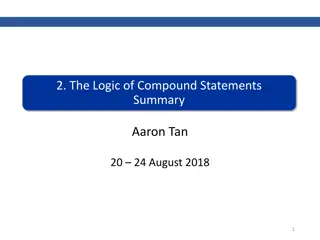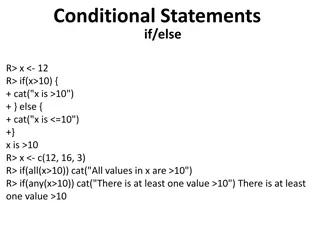Understanding Conditional Statements in Mathematics
A conditional statement in the form "If ___, then ___" comprises a hypothesis and a conclusion. Examples and explanations on identifying hypotheses and conclusions, rewriting statements, finding converses, and providing counterexamples are provided in this informative content snippet.
Download Presentation

Please find below an Image/Link to download the presentation.
The content on the website is provided AS IS for your information and personal use only. It may not be sold, licensed, or shared on other websites without obtaining consent from the author. Download presentation by click this link. If you encounter any issues during the download, it is possible that the publisher has removed the file from their server.
E N D
Presentation Transcript
A statement in the form If _____, then _______. is called a Conditional Statement A conditional statement has two parts: If ______________ , then _______________ . hypothesis conclusion
Examples: Identify the Hypothesis and Conclusion of each conditional statement. Ex1: If today is Monday, then yesterday was Sunday. Hypothesis: Today is Monday. Conclusion: Yesterday was Sunday.
Examples: Identify the Hypothesis and Conclusion of each conditional statement. Ex2. If x = 5, then 2x = 10. Hypothesis: x = 5 Conclusion: 2x = 10. Ex3. If x = 6, then x2 = 36. Hypothesis: x = 6 Conclusion: x2 = 36.
Rewriting conditional statements into the if then format. Ex4) 3x + 2 = -13 implies that x = -5. Rewrite as If 3x + 2 = -13, then x = -5. Hypothesis: 3x + 2 = -13 Conclusion: x = -5
Ex5) A number is divisible by 2 if it is divisible by 6. Rewrite as If a number is divisible by 6, then it is divisible by 2. Hypothesis: A number is divisible by 6. Conclusion: The number is divisible by 2.
To find the converse of a conditional statement, you switch the hypothesis and conclusion. Ex6: If today is Monday, then yesterday was Sunday. Hypothesis: Today is Monday. Conclusion: Yesterday was Sunday. Converse: If yesterday was Sunday, then today is Monday.
Not all converses will be true!! Ex7. If you live in Doylestown, then you live in Pennsylvania. Hypothesis: Conclusion: You live in Doylestown. You live in Pennsylvania. Converse: If you live in Pennsylvania, then you live in Doylestown. Is this converse true? No.
In order to prove the converse is false, you must provide a counterexample. A counterexample is an example for which the hypothesis is true, but the conclusion is false. Counterexample: You live in Chalfont.
Example: For the conditional statement, a) identify the hypothesis and conclusion, b) write the converse of the statement and determine if the converse is true or false. c) If the converse is false, provide a counterexample. If x , 5 then x . 5 Ex8) = = x = 5 a) Hypothesis: x = -5 Conclusion: If x , 5 then x . 5 b) Converse: False = = c) Counterexample: x = 5.
Biconditional Statements use the phrase if and only if to indicate when a conditional and its converse are both true. If today is Monday, then yesterday was Sunday. Rewrite: Today is Monday if and only if today yesterday was Sunday.
You can rewrite definitions as biconditionals. Ex1. Coplanar points are points all in one plane. Points are coplanar if and only if they all lie in one plane. Ex2. Congruent segments are segments that have equal lengths. Segments are congruent if and only if their lengths are equal.
Ex3. Complementary angles are two angles whose measures add up to 90 . Two angles are complementary if and only if their measures add up to 90 .
